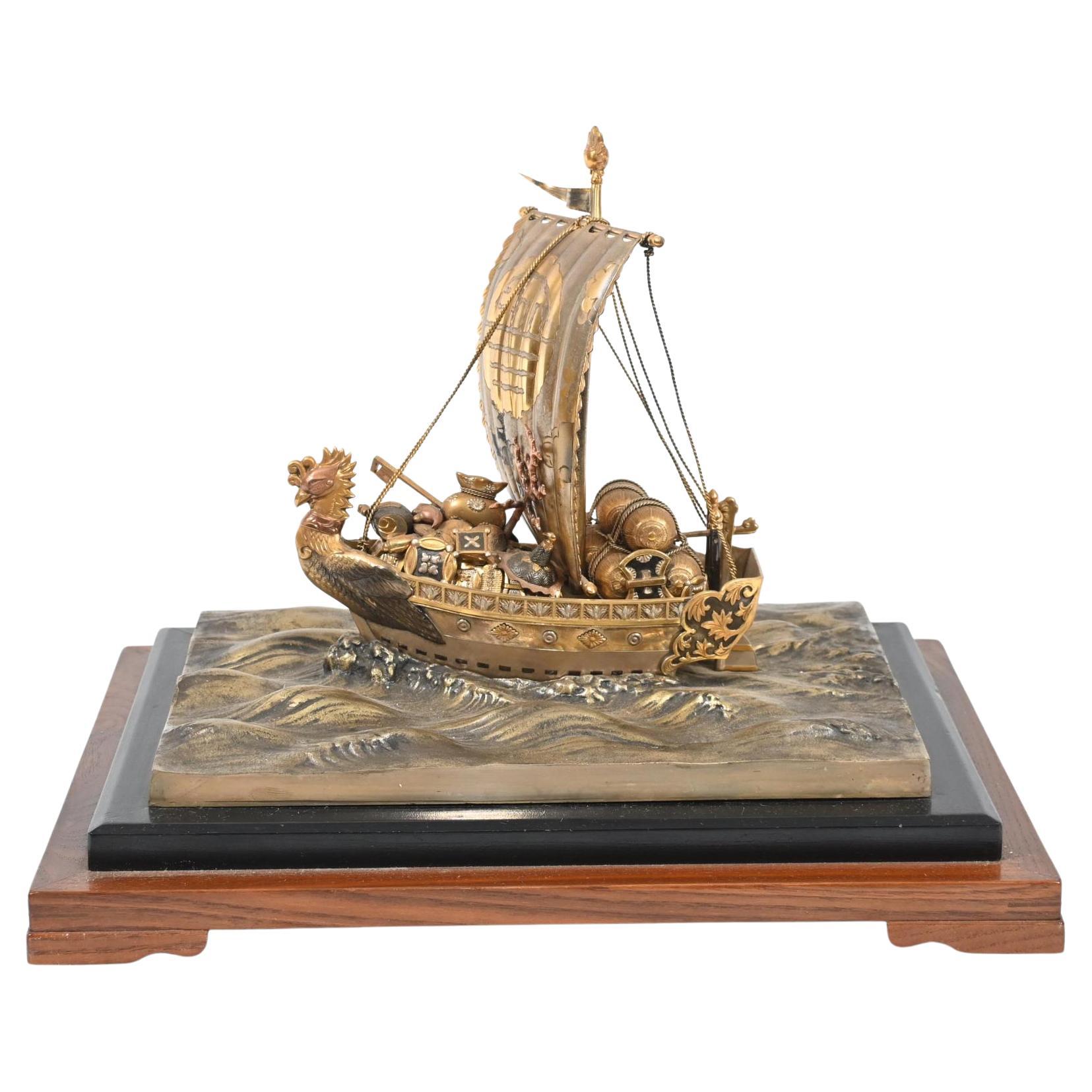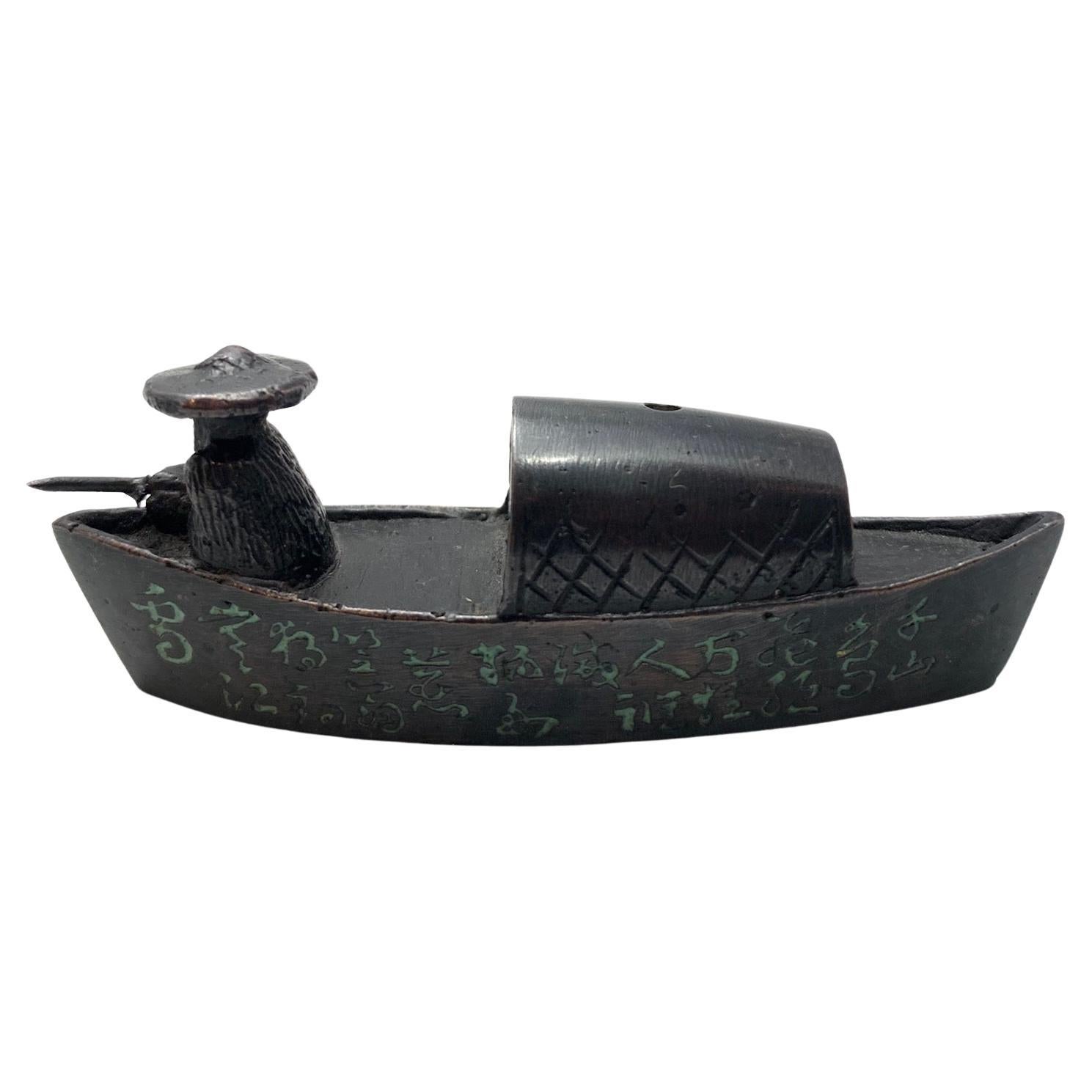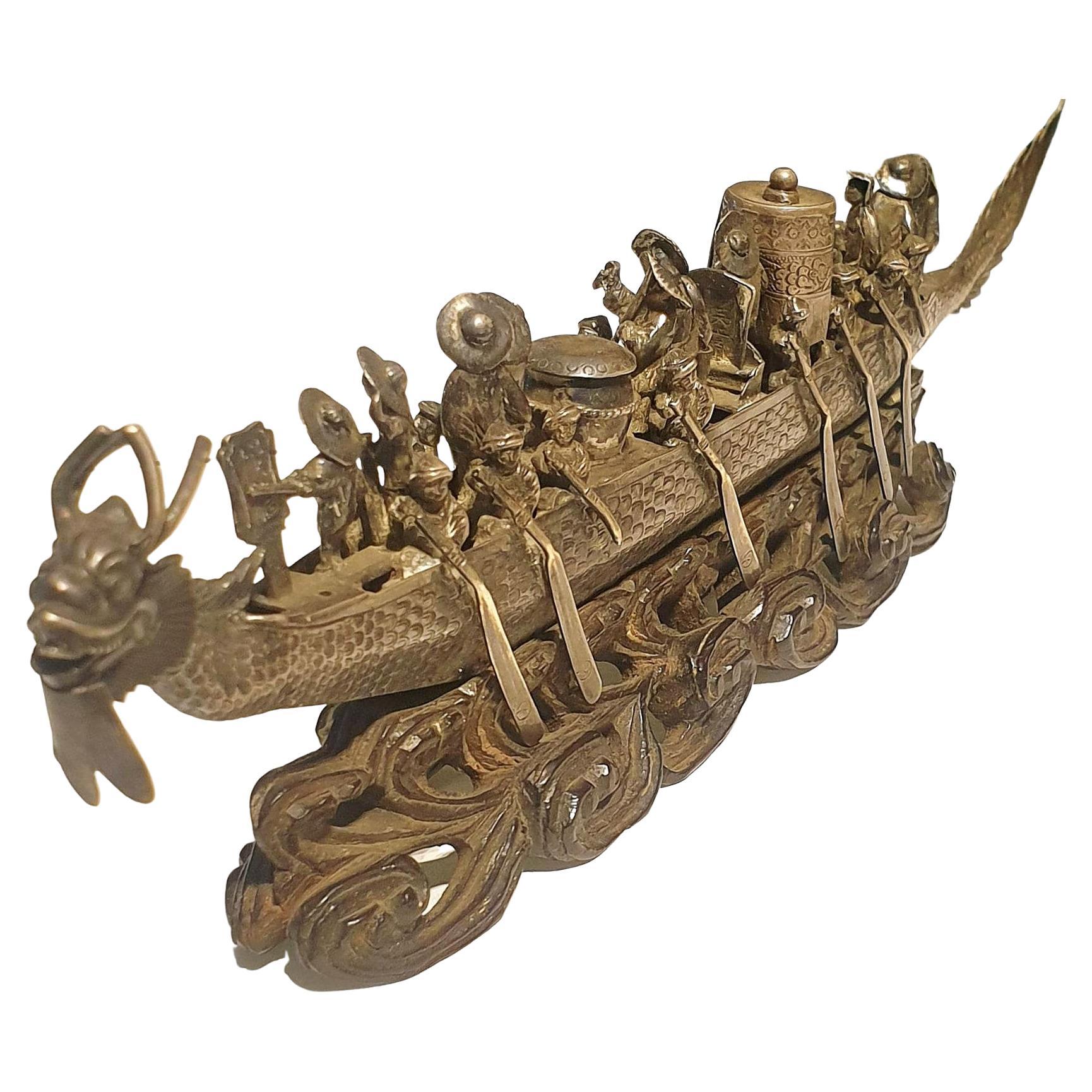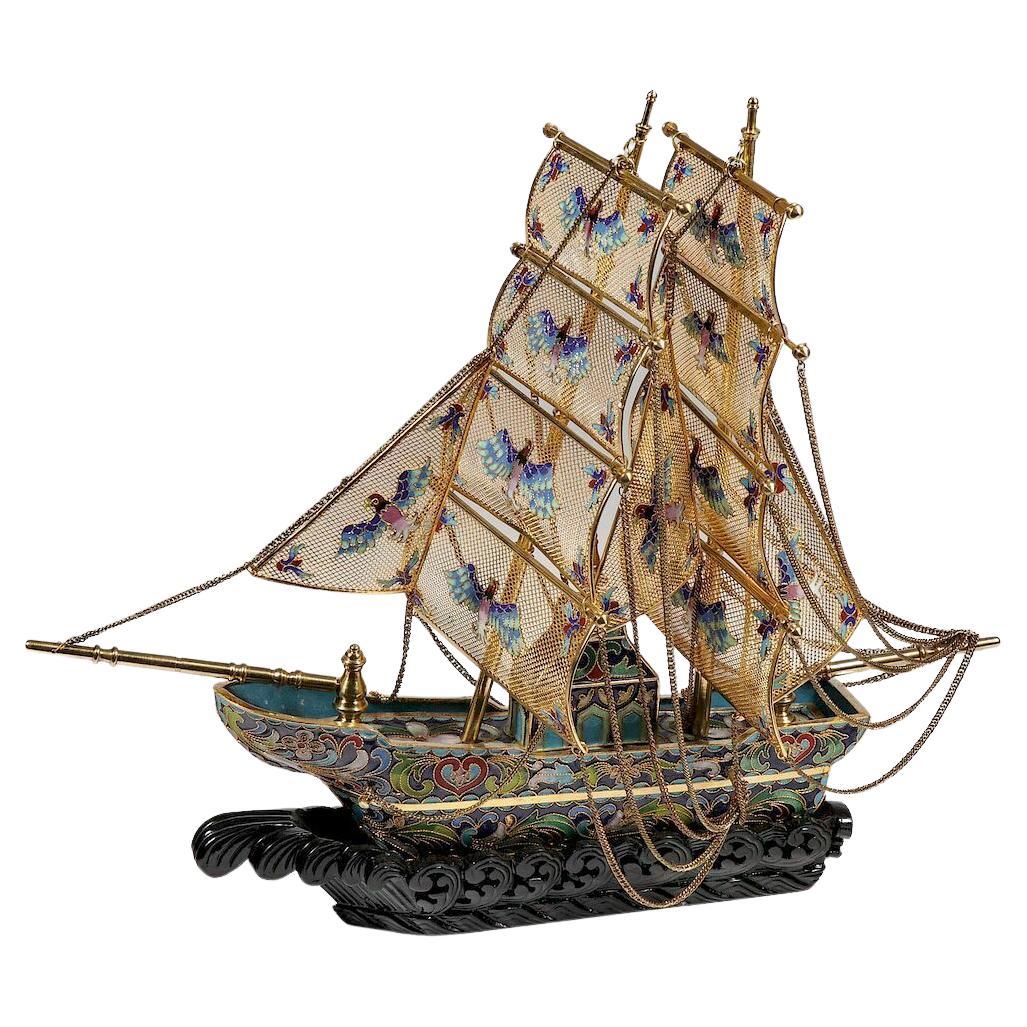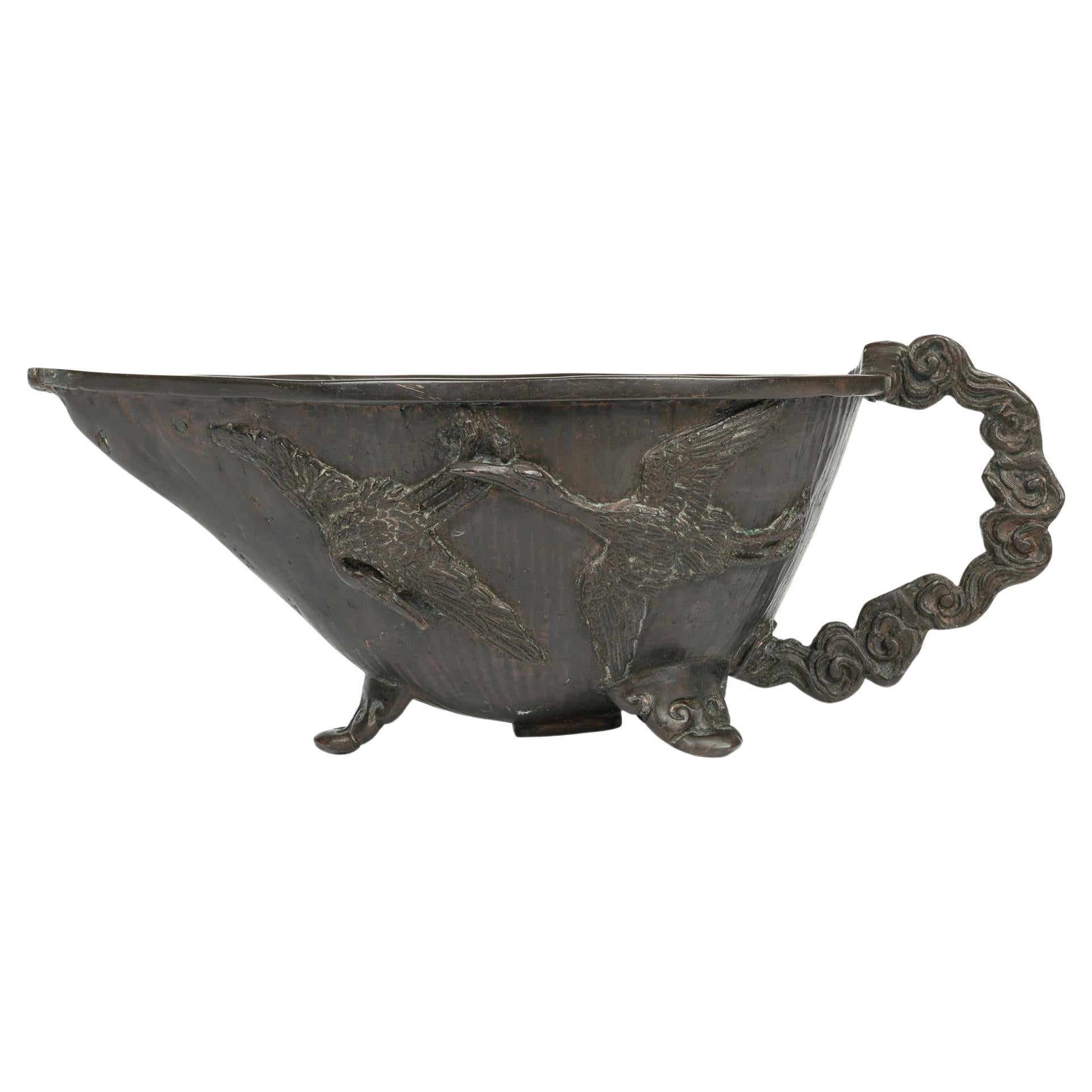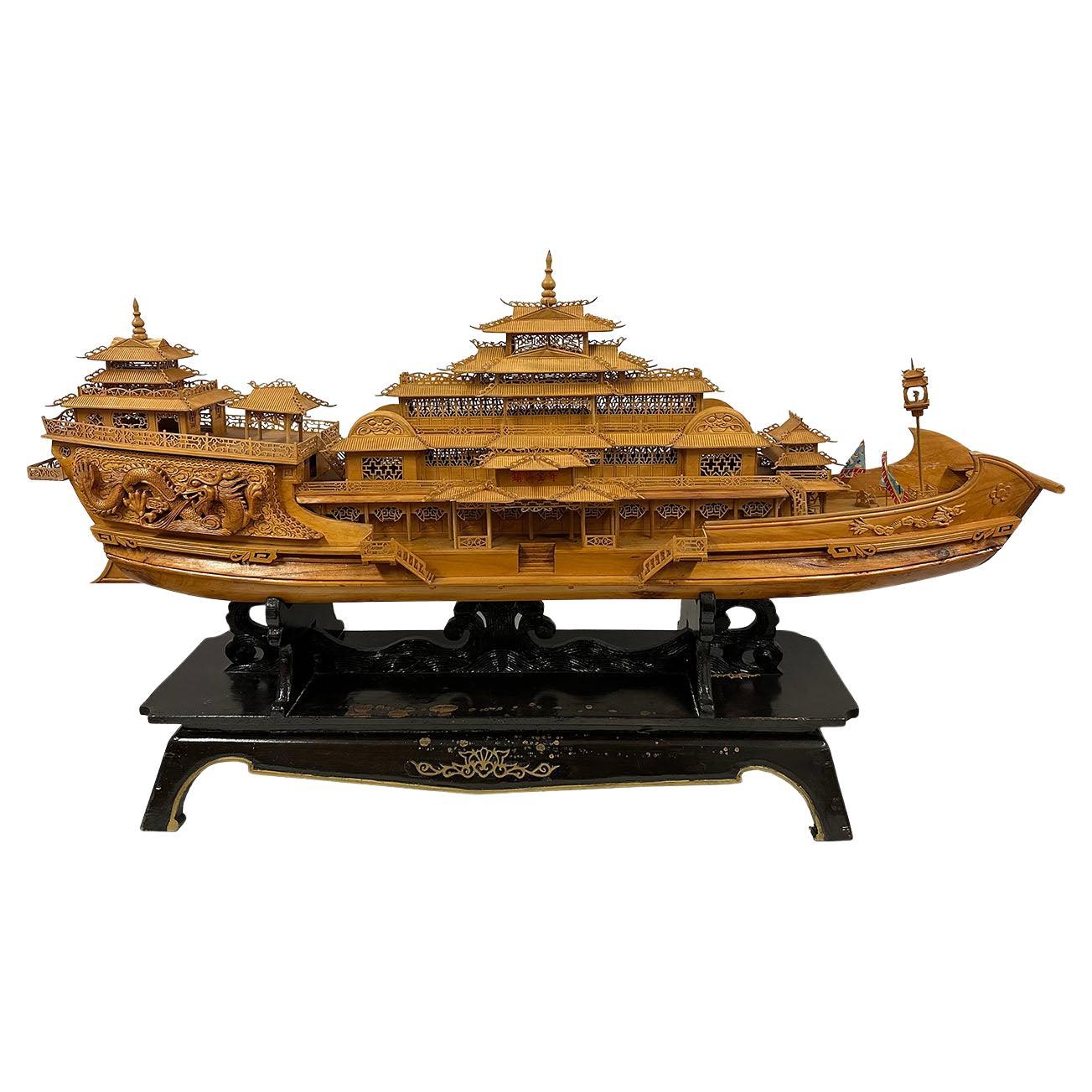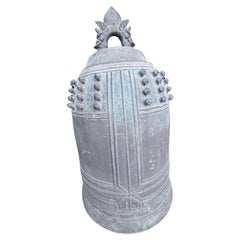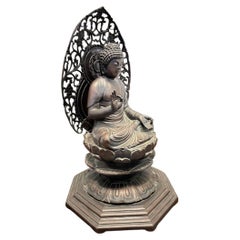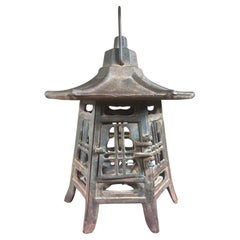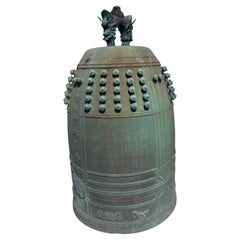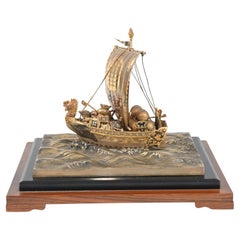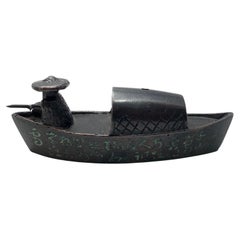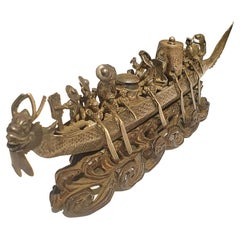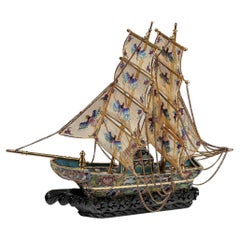Items Similar to Japanese Huge Antique Bronze "Treasure Fortune" Ship Masterwork
Video Loading
Want more images or videos?
Request additional images or videos from the seller
1 of 21
Japanese Huge Antique Bronze "Treasure Fortune" Ship Masterwork
$7,600
$18,50058% Off
£5,766.71
£14,037.3758% Off
€6,593.71
€16,050.4858% Off
CA$10,615.14
CA$25,839.4858% Off
A$11,802.59
A$28,729.9958% Off
CHF 6,162.66
CHF 15,001.2258% Off
MX$143,666.27
MX$349,713.9458% Off
NOK 78,632.88
NOK 191,408.9858% Off
SEK 73,675.25
SEK 179,341.0658% Off
DKK 49,210.08
DKK 119,787.7058% Off
Shipping
Retrieving quote...The 1stDibs Promise:
Authenticity Guarantee,
Money-Back Guarantee,
24-Hour Cancellation
About the Item
Huge 43 inch high Japanese Bronze Treasure Masterwork
Suited for a museum, special indoor gallery space, or garden comes this Japanese superbly hand cast solid bronze fortune treasure boat "Takarabune" in full sail proudly brandishing images of the seven lucky gods on hull and three messengers of fortune on sail: plum tree, bamboo, and pine. Its ships' hold bursts with gold, sake, coral, jewels, and a full purse.
During the first three days of the New Year the Seven Lucky Gods are said to pilot through the heavens to human ports as the Takarabune or Treasure Ship. As it sails into town bringing good fortune, the takarabune is celebrated in a New Year's tradition in Japan, especially by hopeful businesses.
It is superbly hand modeled and decorated with wave and cloud, lotus and dragon motif Japans famous phoenix and turtle among many images cast into one of its sides. The hold is chock full of detailed almost realistic dimensional interior treasures including a Kirin flanked by a dragon and a phoenix and a great number of good fortune attributes: gold koban coin, sake casks galore, the sacred key, precious coral, a valued scroll, the hat of invisibility, the lucky Hammer, an open book, precious jewels, natural treasures, and the eponymous never empty purse. The sail turns to port and starboard and even the rudder works! The free moving silk tassels adorning sail is decorated with good luck images of every description. And the ship's hull depicts Japan's lucky gods:
1 Ebisu the god of prosperity and wealth in business
2 Daikokuten the god of commerce and prosperity.
3 Bishamonten, adopted by the Japanese culture, is the god of fortune in war and battles, also associated with authority and dignity.
4 Benzaiten, while being the only female Fukujin in the modern grouping of seven Fukujin, she was given the attributes of financial fortune, talent, beauty and music among others.
5 Jurojin, considered the incarnation of the southern pole star is the god of the elderly and longevity
6 Hotei is the god of fortune, guardian of the children, patron of diviners and barmen, and also the god of popularity. He is depicted as a fat, smiling, bald man usually with a curly moustache.
7 Fukurokuju, another Shichifukujin, has his origins in China and is believed that he used to be a hermit during the Chinese Song dynasty, distinguished for being a reincarnation of the Taoist god Hsuan-wu. He is the god of wisdom, luck, longevity, wealth and happiness.
And sometimes:
8 Kichijoten, a Fukujin goddess. Is also known as Kisshoutennyo (????), and is adapted via Buddhism from the Hindu goddess Lakshmi. Kisshoten was given the traits beauty, happiness, and fertility.
Fine quality.
A unique, impressive sculpture destined for the finest collection and indoor space or garden display.
Handmade and hand cast. Boat and attachable sail make two pieces. This is only the second example of this impressive form we have had the pleasure of handling in over twenty years.
Only one available.
Dimensions: 43 inches tall and 42 inches long and 19 inches deep, heavy.
Provenance: Private Japanese American Collection.
Lifetime guarantee of authenticity: We are members of NAJGA- North American Japanese Garden Association.
History of Seven Lucky Gods:
In Japanese mythology, the Seven Lucky Gods or Seven Gods of Fortune (shichifukujin in Japanese) are believed to grant good luck and often have their place in netsuke engravings or in other representations. These gods have been recognized for over a thousand years. In the beginning, these gods were worshiped by merchants as the first two (Ebisu and Daikokuten) were gods of business and trade. Subsequently, the other classes of Japanese society looked for other gods that could correspond with their professions: Benzaiten as the patron of the arts, Fukurokuju as the patron of the sciences.
- Dimensions:Height: 43 in (109.22 cm)Width: 42 in (106.68 cm)Depth: 19 in (48.26 cm)
- Style:Taisho (Of the Period)
- Materials and Techniques:Bronze,Cast
- Place of Origin:
- Period:
- Date of Manufacture:Early 20th Century
- Condition:Wear consistent with age and use.
- Seller Location:South Burlington, VT
- Reference Number:1stDibs: LU1289216804692
About the Seller
5.0
Platinum Seller
Premium sellers with a 4.7+ rating and 24-hour response times
Established in 1990
1stDibs seller since 2015
2,386 sales on 1stDibs
Typical response time: <1 hour
- ShippingRetrieving quote...Shipping from: South Burlington, VT
- Return Policy
Authenticity Guarantee
In the unlikely event there’s an issue with an item’s authenticity, contact us within 1 year for a full refund. DetailsMoney-Back Guarantee
If your item is not as described, is damaged in transit, or does not arrive, contact us within 7 days for a full refund. Details24-Hour Cancellation
You have a 24-hour grace period in which to reconsider your purchase, with no questions asked.Vetted Professional Sellers
Our world-class sellers must adhere to strict standards for service and quality, maintaining the integrity of our listings.Price-Match Guarantee
If you find that a seller listed the same item for a lower price elsewhere, we’ll match it.Trusted Global Delivery
Our best-in-class carrier network provides specialized shipping options worldwide, including custom delivery.More From This Seller
View AllJapanese Huge Bronze Bell With Double Inscription, 28"
Located in South Burlington, VT
Huge Japanese Bronze Bell Doubly Inscribed - a rare survivor from the 20th century.
Rare inscriptions are dedications and patron names to the persons associated with the temple or s...
Category
20th Century Japanese Showa Sculptures and Carvings
Materials
Bronze
Japanese Large Old Bronze Seated Buddha , Kyoto Find
Located in South Burlington, VT
Japan, a fine large old seated Buddha, heavily hand cast bronze, with a fine medium to dark brown patina performing the mudra of compassion.
High quality, deep casting with fine ser...
Category
Mid-20th Century Japanese Showa Sculptures and Carvings
Materials
Bronze
Japanese Antique Classic Pagoda Roof Lantern
Located in South Burlington, VT
Classic Japanese Garden Lantern
This beautifully hand-cast lantern sculpture in a classic Japanese form, would make an exceptional visual statement and substantial conversational c...
Category
Early 20th Century Japanese Taisho Sculptures and Carvings
Materials
Iron
Japanese Massive Bronze Peace Bell 45 Inches Tall
Located in South Burlington, VT
Massive Japanese Bronze Bell Inscribed and dedicated to peace and humanity, 1947.
Please view our video.
At the top, the handle (ryûzu) is crafted in the form of two mirrored drago...
Category
Mid-20th Century Japanese Showa Sculptures and Carvings
Materials
Bronze
Japan Antique Large Bronze Bell With Pleasing Sound 20"
Located in South Burlington, VT
Japanese Large Patinated Bronze Temple Bell With A Resonating Sound Guaranteed to Please You
Free Shipping
For your meditation area, or special garden display comes this handsom...
Category
Early 20th Century Japanese Taisho Sculptures and Carvings
Materials
Bronze
Chinese Antique Monumental Buddhist Wooden Pagoda Tower, 70 Inches
Located in South Burlington, VT
China antique monumental Wooden Pagoda, total height is 70 inches, hand carved and hand painted wood, seven hexagonal sections plus finial, late Qin...
Category
Early 20th Century Chinese Qing Sculptures and Carvings
Materials
Wood
You May Also Like
Japanese Silver Plate Takehiko Seki Lucky Treasure Ship
Located in Potters Bar, GB
Japanese Silver Plate lucky treasure ship
Very detailed enamel and silver plate crafting
Circa 1930
Ship's bow features the phoenix head
Ship is laden with cargo in the stormy seas
G...
Category
Vintage 1930s Anglo-Japanese Sheffield and Silverplate
Materials
Wood
Bronze Boat-Shaped Suiteki
Located in Point Richmond, CA
Japanese bronze suiteki c. 1980's.
A suiteki is a small vessel for holding water to be added to ink for calligraphy. This particular suiteki features ...
Category
Late 20th Century Japanese Japonisme Scholar's Objects
Materials
Bronze
Antique Chinese Dynasty Silver Boat
Located in Cairo, EG
Antique chinese silver boat dates back to the quing dynasty 1644-1912 hall marked with silver standard and initial maker mark
Category
Antique Mid-19th Century Vases
Large Chinese Cloisonné Enamel Filligree and Gilt Boat
Located in Norton, MA
A Large Chinese
Cloisonne Enamel Filigree
and Gilt Boat with Wood Base
The sails with colorful enameled birds, resting on a conforming carved ...
Category
Mid-20th Century Chinese Chinese Export Metalwork
Materials
Copper
Chinese Qing Bronze Sauce Boat with Flying Cranes
Located in Bishop's Stortford, Hertfordshire
A stylish and impressive antique Chinese Qing bronze sauce boat decorated with cranes and dating from the 19th century. The sauce boat has been created in ...
Category
Antique 19th Century Chinese Qing Metalwork
Materials
Bronze
Mid-20th Century, Chinese Large Wooden Carved Elaborate Imperial Dragon Ship
Located in Pomona, CA
This large model of imperial dragon ship was intricately and elaborately carved with brilliant lattice work and details on the display stand. It actual a royal palace built on the sh...
Category
Mid-20th Century Chinese Chinese Export Figurative Sculptures
Materials
Wood
